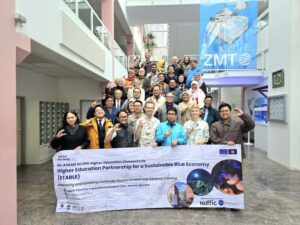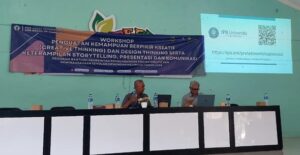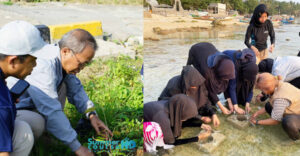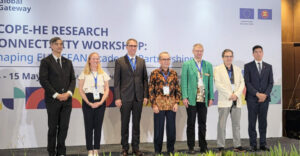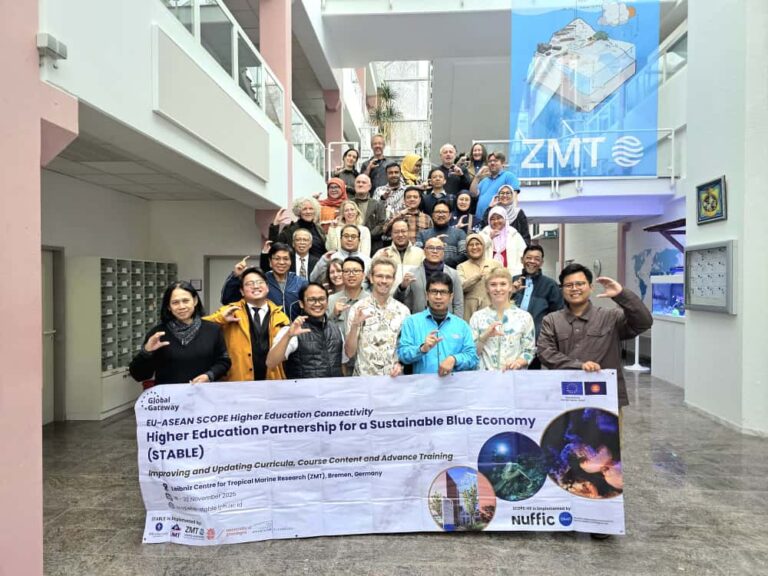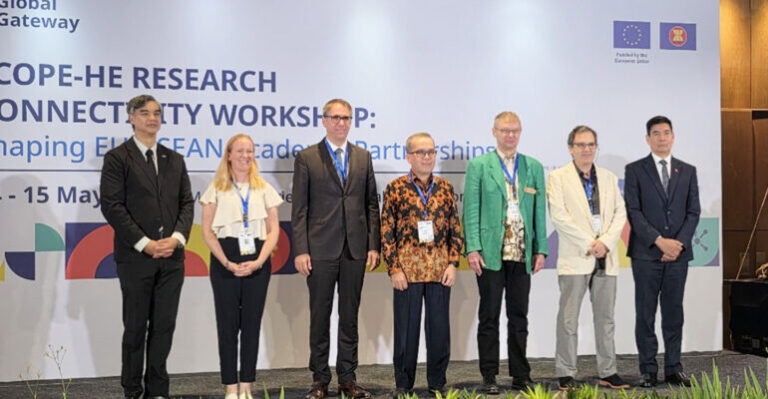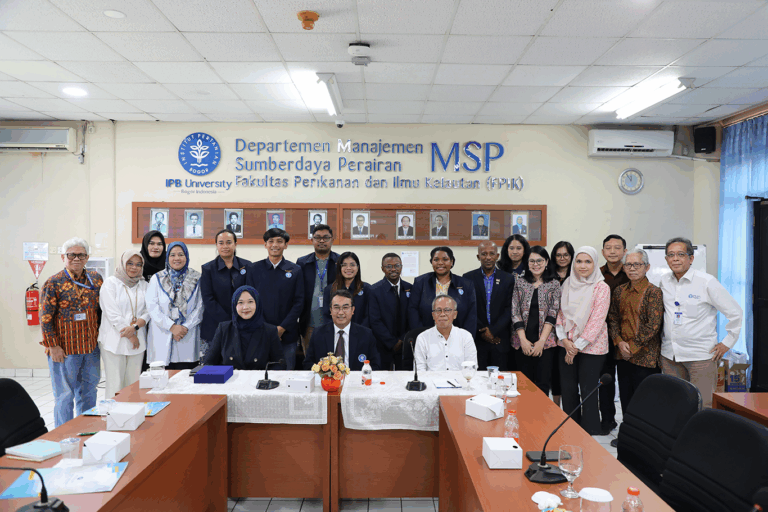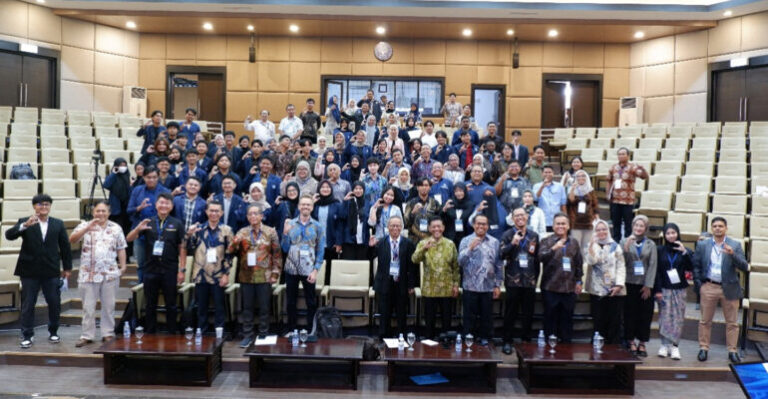Breakthrough in Monitoring Aquatic Biodiversity with eDNA
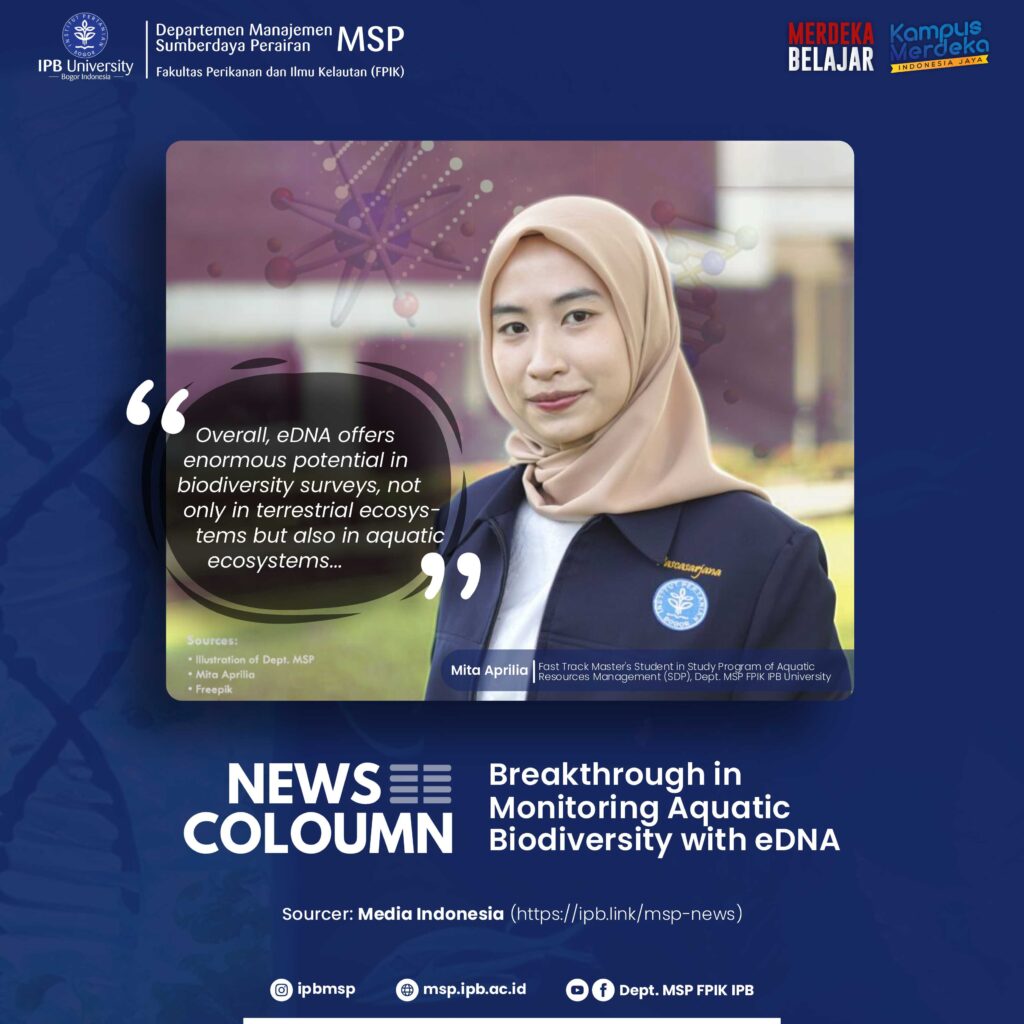 Mita Aprilia – Fast Track Master’s Student in Study Program of Aquatic Resources Management (SDP), Dept. MSP FPIK IPB University; Global biodiversity tends to experience a significant decline, reaching an average of 69% in the period 1970-2018, and Indonesia is no exception. This population decline figure was concluded after identifying more than 5,230 species worldwide. This is summarized in the Living Planet Report 2022 which was compiled by the world conservation organization the World Wide Fund for Nature (WWF).
Mita Aprilia – Fast Track Master’s Student in Study Program of Aquatic Resources Management (SDP), Dept. MSP FPIK IPB University; Global biodiversity tends to experience a significant decline, reaching an average of 69% in the period 1970-2018, and Indonesia is no exception. This population decline figure was concluded after identifying more than 5,230 species worldwide. This is summarized in the Living Planet Report 2022 which was compiled by the world conservation organization the World Wide Fund for Nature (WWF).
This rapid decline in biodiversity needs to be material for reflection on Environment Day 5 June 2023, and a breakthrough is needed that can provide comprehensive information about the types and quantities of terrestrial and aquatic biodiversity. Biodiversity conservation amid increasing human pressure is hampered by a lack of basic information on species presence, distribution, abundance, suitable habitat, and threats from natural phenomena and human behavior. Obtaining this information requires an efficient and sensitive method capable of detecting all living things, including endangered species.
The advent of fast and relatively inexpensive DNA sequencing techniques has markedly enhanced biodiversity research. Environmental DNA (eDNA) sampling has attracted worldwide attention, and interest in using these tools in biodiversity assessment has grown rapidly in recent years. The two terms that have received the most attention in eDNA-based studies are barcoding and metabarcoding. The main difference between the two is; barcoding uses specific primers to detect DNA fragments from a single species, whereas metabarcoding uses universal primers to simultaneously detect millions of DNA fragments from different species.
Fragment detection
eDNA is sourced from genetic material from hair, skin, urine, faeces, gametes, and other body parts, to dead organisms in degraded forms, whether in water, sediment, soil, or air. The use of eDNA has very promising potential in the field of conservation. First, eDNA techniques are fast, efficient and relatively inexpensive, thereby providing opportunities to monitor species, population and community dynamics, diversity, and to map their geographic distribution over long periods of time and large spatial scales. Second, eDNA sampling is simple, non-destructive and non-invasive, because there is no direct contact with biota and their habitat. Third, eDNA has a high probability of detection for rare species even if the density is relatively low, and is capable of detecting organisms from juvenile to larval stages. Fourth, eDNA allows early detection of biological invasion and timely eradication before dominance occurs. Fifth, eDNA enables accurate identification of target organisms using standard genetic-based methods. Sixth, eDNA sampling has the potential to offer broad taxonomic coverage, thereby enabling simultaneous assessment of biodiversity for a wide range of organisms.
eDNA controversy
However, as much as the ecological and conservation significance that eDNA can potentially address, there are challenges as well as limitations. Referring Operational Taxonomic Units (OTU) to species is a fundamental step. However, the incompleteness of the reference database is an important limitation in this regard. Then, whether eDNA sampling is more sensitive and has higher resolution than conventional biodiversity monitoring methods remains controversial.
For some species, eDNA does work better than traditional methods; for others, eDNA is just as good as traditional surveys. Meanwhile, for some cases, eDNA provides a little additional benefit. In addition to species-specific differences in sensitivity between eDNA and traditional surveys, environmental, timing, and biotic factors also play an important role.
In aquatic ecosystems, for example, eDNA can last several hours to a month after being released by biota. In addition, differences in the persistence of eDNA can occur even within the same environment, for example, between surface and bottom layers of water.
The ability of eDNA to detect the presence of an ‘invisible’ biota in its habitat also raises the question, whether the organism was actually present at the time of monitoring or only the DNA fragments remained. Unfortunately, eDNA has not been able to distinguish the life phases of the identified biota.
The degradation of eDNA in the environment also limits the scope of eDNA studies, as often only a small portion of the genetic material remains. Then, there is also the possibility of contamination occurring, so sampling and laboratory analysis must be carried out with great care.
What also needs to be underlined is that the calculation of species abundance and diversity is estimated based on read DNA sequences, not based on individual abundance. So, it is possible that the DNA sequences found came from different parts of the body but from the same individual.
Complementing monitoring
The key considerations in eDNA analysis are maximizing DNA collection in the field, minimizing degradation during transport and storage, and maximizing successful DNA isolation and amplification in the laboratory. Information from eDNA often complements conventional survey data.
Overall, eDNA offers enormous potential in biodiversity surveys, not only in terrestrial ecosystems but also in aquatic ecosystems, and can enrich the body of understanding of biodiversity dynamics. However, it also requires further research to overcome various challenges and maximize its potential. Furthermore, eDNA monitoring can be a complement to biodiversity monitoring, which is currently carried out conventionally, which generally focuses on macroscopic and living organisms.
Sources: Media Indonesia
 Mita Aprilia – Fast Track Master’s Student in Study Program of Aquatic Resources Management (SDP), Dept. MSP FPIK IPB University; Global biodiversity tends to experience a significant decline, reaching an average of 69% in the period 1970-2018, and Indonesia is no exception. This population decline figure was concluded after identifying more than 5,230 species worldwide. This is summarized in the Living Planet Report 2022 which was compiled by the world conservation organization the World Wide Fund for Nature (WWF).
Mita Aprilia – Fast Track Master’s Student in Study Program of Aquatic Resources Management (SDP), Dept. MSP FPIK IPB University; Global biodiversity tends to experience a significant decline, reaching an average of 69% in the period 1970-2018, and Indonesia is no exception. This population decline figure was concluded after identifying more than 5,230 species worldwide. This is summarized in the Living Planet Report 2022 which was compiled by the world conservation organization the World Wide Fund for Nature (WWF).
This rapid decline in biodiversity needs to be material for reflection on Environment Day 5 June 2023, and a breakthrough is needed that can provide comprehensive information about the types and quantities of terrestrial and aquatic biodiversity. Biodiversity conservation amid increasing human pressure is hampered by a lack of basic information on species presence, distribution, abundance, suitable habitat, and threats from natural phenomena and human behavior. Obtaining this information requires an efficient and sensitive method capable of detecting all living things, including endangered species.
The advent of fast and relatively inexpensive DNA sequencing techniques has markedly enhanced biodiversity research. Environmental DNA (eDNA) sampling has attracted worldwide attention, and interest in using these tools in biodiversity assessment has grown rapidly in recent years. The two terms that have received the most attention in eDNA-based studies are barcoding and metabarcoding. The main difference between the two is; barcoding uses specific primers to detect DNA fragments from a single species, whereas metabarcoding uses universal primers to simultaneously detect millions of DNA fragments from different species.
Fragment detection
eDNA is sourced from genetic material from hair, skin, urine, faeces, gametes, and other body parts, to dead organisms in degraded forms, whether in water, sediment, soil, or air. The use of eDNA has very promising potential in the field of conservation. First, eDNA techniques are fast, efficient and relatively inexpensive, thereby providing opportunities to monitor species, population and community dynamics, diversity, and to map their geographic distribution over long periods of time and large spatial scales. Second, eDNA sampling is simple, non-destructive and non-invasive, because there is no direct contact with biota and their habitat. Third, eDNA has a high probability of detection for rare species even if the density is relatively low, and is capable of detecting organisms from juvenile to larval stages. Fourth, eDNA allows early detection of biological invasion and timely eradication before dominance occurs. Fifth, eDNA enables accurate identification of target organisms using standard genetic-based methods. Sixth, eDNA sampling has the potential to offer broad taxonomic coverage, thereby enabling simultaneous assessment of biodiversity for a wide range of organisms.
eDNA controversy
However, as much as the ecological and conservation significance that eDNA can potentially address, there are challenges as well as limitations. Referring Operational Taxonomic Units (OTU) to species is a fundamental step. However, the incompleteness of the reference database is an important limitation in this regard. Then, whether eDNA sampling is more sensitive and has higher resolution than conventional biodiversity monitoring methods remains controversial.
For some species, eDNA does work better than traditional methods; for others, eDNA is just as good as traditional surveys. Meanwhile, for some cases, eDNA provides a little additional benefit. In addition to species-specific differences in sensitivity between eDNA and traditional surveys, environmental, timing, and biotic factors also play an important role.
In aquatic ecosystems, for example, eDNA can last several hours to a month after being released by biota. In addition, differences in the persistence of eDNA can occur even within the same environment, for example, between surface and bottom layers of water.
The ability of eDNA to detect the presence of an ‘invisible’ biota in its habitat also raises the question, whether the organism was actually present at the time of monitoring or only the DNA fragments remained. Unfortunately, eDNA has not been able to distinguish the life phases of the identified biota.
The degradation of eDNA in the environment also limits the scope of eDNA studies, as often only a small portion of the genetic material remains. Then, there is also the possibility of contamination occurring, so sampling and laboratory analysis must be carried out with great care.
What also needs to be underlined is that the calculation of species abundance and diversity is estimated based on read DNA sequences, not based on individual abundance. So, it is possible that the DNA sequences found came from different parts of the body but from the same individual.
Complementing monitoring
The key considerations in eDNA analysis are maximizing DNA collection in the field, minimizing degradation during transport and storage, and maximizing successful DNA isolation and amplification in the laboratory. Information from eDNA often complements conventional survey data.
Overall, eDNA offers enormous potential in biodiversity surveys, not only in terrestrial ecosystems but also in aquatic ecosystems, and can enrich the body of understanding of biodiversity dynamics. However, it also requires further research to overcome various challenges and maximize its potential. Furthermore, eDNA monitoring can be a complement to biodiversity monitoring, which is currently carried out conventionally, which generally focuses on macroscopic and living organisms.
Sources: Media Indonesia
